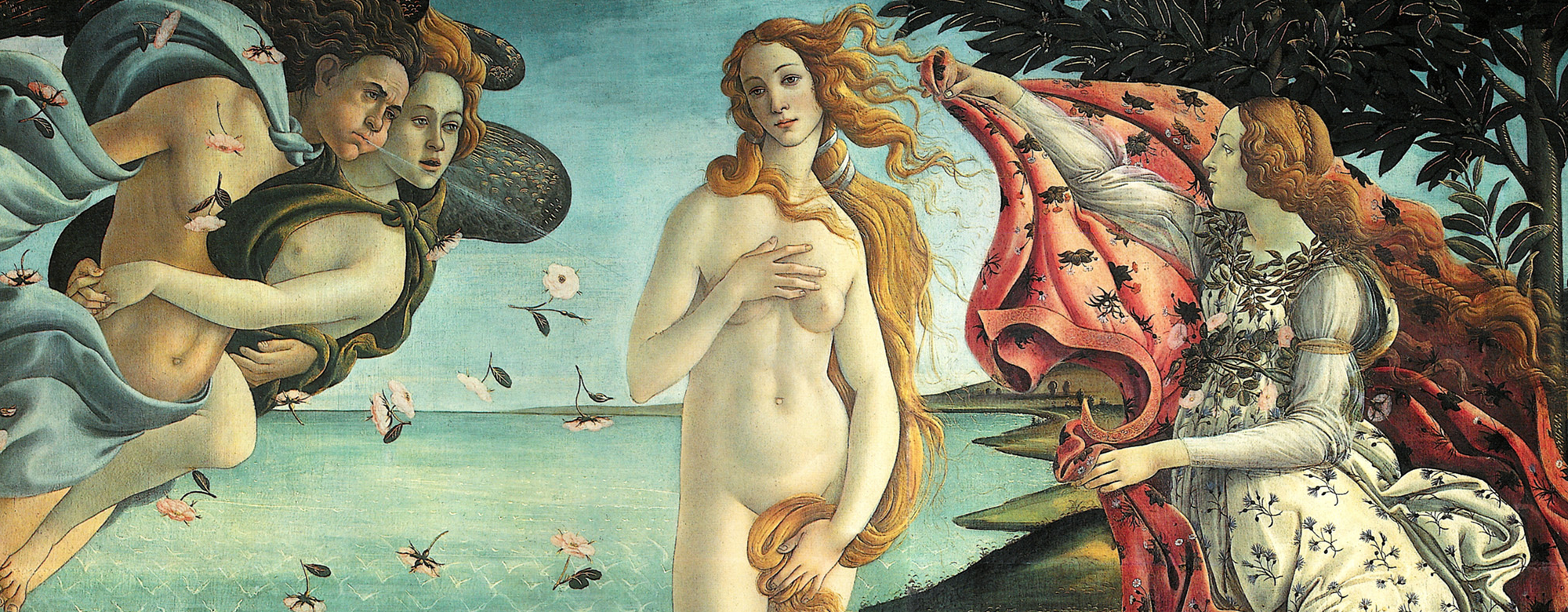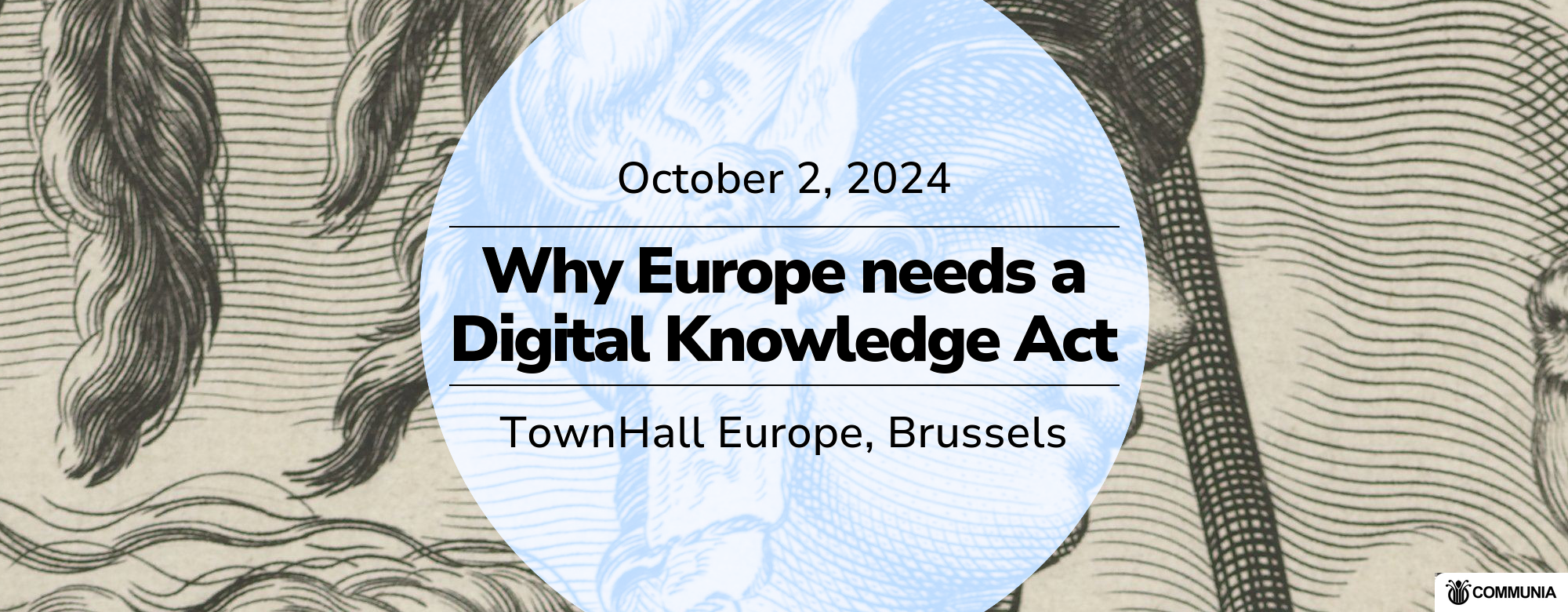Two weeks ago, the Uffizi Gallery sent ripples through the open community by suing French fashion designer Jean Paul Gaultier for using Sandro Botticelli’s The Birth of Venus (1483) — which is on display in the Uffizi — in a clothing collection. Botticelli’s death in 1510 preceded the birth of copyright by centuries and his paintings are in the Public Domain worldwide. So on what grounds are the Uffizi taking action against Gaultier?
The answer lies not in copyright law but in the Italian cultural heritage code, Article 108 of Legislative Decree no. 42 of 2004 to be precise. This article of administrative law imposes a concession fee for the commercial reproduction of publicly owned works to be paid in advance to the institution delivering the work. Notably, the approach is also different from the concept of the Paying Public Domain or domaine public payant that exists in a number of African and Latin American countries and which taxes all uses of Public Domain works. Under the Italian cultural heritage code, fees need only to be paid for works that are held by Italian cultural heritage institutions and directly to that institution, not to the Italian state.
Cultural heritage laws should promote the public interest
We are aware of similar laws existing in Greece (Article 46 of Law no. 3028/2002 on the Protection of Antiques and Cultural Heritage in General), France (Article L621-42 of Code du Patrimoine) and Portugal (Administrative Order no. 10946/2014 on the Use of Images of Museums, Monuments and other Properties allocated to the Directorate-General for Cultural Heritage). Importantly, administrative law in general and this type of cultural heritage code in particular operate on a different logic than intellectual property law, as Simone Ariprandi explains in greater detail. Administrative law as an area of public law governs relations between legal persons and the state and not relations between private individuals. The intention is thus to promote the public interest and not to protect the private interests of authors.
The problem is that this law does quite the opposite of promoting the public interest by de facto curtailing the Public Domain. The Public Domain is an essential component not just of our copyright system, but essential to our social and economic welfare, as expressed in our Public Domain Manifesto:
[The Public Domain] is the basis of our self-understanding as expressed by our shared knowledge and culture. It is the raw material from which new knowledge is derived and new cultural works are created. The Public Domain acts as a protective mechanism that ensures that this raw material is available at its cost of reproduction — close to zero — and that all members of society can build upon it.
Imposing a fee for the use of certain Public Domain works restricts access to these public goods and thus stifles creativity. COMMUNIA is built on the conviction that the Public Domain must be upheld and guarded against attempts to enclose it from both public and private actors if we want to ensure the widest possible access to culture and knowledge and creativity to thrive.
Users should be trusted
So why do some EU countries exploit the physical ownership of works for which copyright has long expired? There are two main reasons, which from the perspective of national lawmakers might justify this measure. The first one is financial. The second one could be a paternalistic argument to retain some control over the artifacts held by national cultural heritage institutions and shield them against alleged misuse.
The financial argument does not stand up to a simple cost-benefit analysis. Fees collected through this mechanism do more harm than good, and any revenue generated is far outweighed by the heavy cost for members of society who are deprived of their fundamental right to access and enjoy culture, knowledge and information.
The notion that artists like Botticelli et al. and their work require protection from the general public is also easily dispelled. While we understand that masterpieces like the Birth of Venus are closely associated with the Uffizi and representative of Italian culture in general, this does not justify a financial barrier to the reuse of Public Domain works. There is also little evidence for the inappropriate use of Public Domain works, as stated in CC’s “What Are the Barriers to Open Culture?” report. Thus, we do not see a basis for retaining control by pricing out unwanted uses to ensure that no harm is caused to the reputation of the work, the author or the institution itself. We believe to the contrary that in an open society, the public must be trusted and enabled to make uses that are in line with fundamental freedoms, including freedom of expression.
It is unlikely that the Uffizi are worried that the commercial exploitation of the Birth of Venus per se would create a reputational risk, since this contradicts the institution’s own practice of exploiting its works of art for commercial gain. It is of course a question of personal taste whether one likes Gaultier’s printed multicolor tulle lounge pants or not. Yet a quick look at the Uffizi webshop reveals that the institution is by no means shy to market Botticelli’s masterpiece in similar ways. The visitor will find a shopping bag, a spectacle case (including a spectacle cloth), an oven glove and similar artifacts all incorporating Boticelli’s painting in some way or another. To be clear, the Uffizi should use works from their collection as they see fit to generate income. But to claim that museum professionals know better how to place the Birth on an oven glove is dubious at best.
Botticelli created the Birth of Venus during the 1480s — more than 500 years ago — and yet it remains so iconic not in spite of Jean Paul Gaultier, the Simpsons and other commercial creators referencing or incorporating the work but because of them. The transformative use of the Birth — even in a commercial context — doesn’t diminish the work, but keeps it relevant and ensures that it lives on as part of our cultural memory.
In sum, Italy’s cultural heritage code, although promoting important principles such as preservation and protection of heritage, poses a threat to the public domain, to the detriment of creators, reusers and society as a whole. While the best way forward is to remove this provision from the Italian cultural heritage code, there is in the meantime room for agency for cultural heritage institutions. Cultural heritage institutions can better fulfill their mission and still operate within the scope of the law by choosing not to request the payment of a fee by reusers of public domain heritage. The Uffizi should lead by example and withdraw its claim, and celebrate how cultural heritage is continuously being reinvented in new and unexpected ways through free creative expression.

